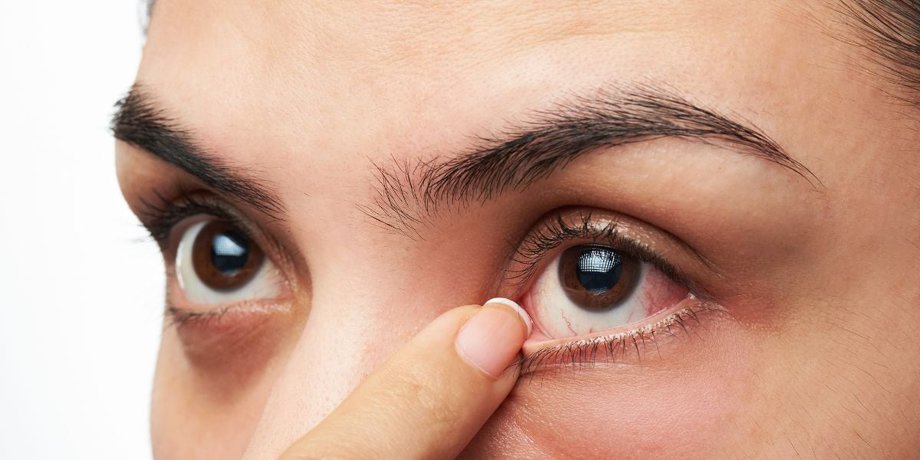What Is the Connection Between Diabetes and Eye Diseases

This article aims to explore the connection between diabetes and eye diseases.
It will discuss the prevalence of eye diseases among individuals with diabetes, as well as the underlying mechanisms that contribute to the development of these complications.
Additionally, the article will examine the risk factors associated with diabetic eye diseases and the common types of eye diseases that often occur in diabetic patients.
Furthermore, preventive measures and treatment options for diabetic eye conditions will be explored.
Key Takeaways
- Eye diseases are more common in individuals with diabetes, with diabetic retinopathy affecting up to 80% of patients with diabetes for 20 years or more.
- Chronic hyperglycemia, inflammation, and oxidative stress are the underlying mechanisms behind diabetic eye complications.
- Lifestyle modifications, such as a healthy diet and regular physical activity, along with blood glucose control through medication and insulin therapy, can help prevent diabetic eye diseases.
- Regular eye examinations are crucial for early detection and intervention, and innovative treatments like anti-VEGF injections have revolutionized the management of diabetic retinopathy.
The Prevalence of Eye Diseases in Diabetic Patients
The prevalence of eye diseases is significantly higher among individuals diagnosed with diabetes. Numerous studies have shown that diabetes can have a profound impact on vision, leading to various eye conditions.
The prevalence rates of these diseases are notably elevated in diabetic patients compared to the general population. Diabetic retinopathy, for instance, is the most common eye disease associated with diabetes, affecting up to 80% of individuals who have had diabetes for 20 years or more. Other eye conditions that are more prevalent in diabetic patients include cataracts and glaucoma.
These conditions can have a detrimental impact on vision, potentially leading to visual impairment or even blindness if left untreated. Therefore, it is crucial for individuals with diabetes to undergo regular eye examinations to detect and manage any eye diseases promptly.
Understanding the Mechanisms Behind Diabetic Eye Complications
Understanding the mechanisms responsible for the complications resulting from diabetes in the eye is an area of ongoing research. Several factors contribute to the progression of diabetic eye diseases, including chronic hyperglycemia, inflammation, and oxidative stress.
Chronic hyperglycemia, or prolonged high blood sugar levels, can damage the blood vessels in the retina, leading to conditions such as diabetic retinopathy.
Diabetes induces chronic low-grade inflammation, which can exacerbate the development and progression of diabetic eye complications.
Increased oxidative stress in diabetes can damage the cells of the retina and accelerate the onset of diabetic eye diseases.
The impact of these mechanisms on the quality of life cannot be understated. Diabetic eye complications can cause visual impairment, leading to a reduced ability to perform daily activities and decreased overall well-being.
Furthermore, the economic burden associated with managing diabetic eye diseases can be substantial, affecting not only the individual but also the healthcare system as a whole.
Continued research into understanding these mechanisms is crucial for developing effective prevention and treatment strategies to mitigate the adverse effects on individuals’ quality of life.
Risk Factors for Developing Diabetic Eye Diseases
Chronic hyperglycemia, inflammation, and oxidative stress have been identified as key factors contributing to the development of diabetic eye complications.
Considering the significant impact of diabetes on eye health, prevention strategies and lifestyle modifications play a crucial role in mitigating the risk of developing diabetic eye diseases.
Implementing lifestyle modifications, such as maintaining a healthy diet, engaging in regular physical activity, and controlling blood glucose levels through medication and insulin therapy, can help prevent or delay the onset of diabetic eye complications.
Additionally, regular eye examinations and early detection of any abnormalities can facilitate timely intervention and treatment.
It is important to prioritize comprehensive diabetes management and adherence to prevention strategies to minimize the impact of diabetic eye complications and maintain optimal eye health in individuals with diabetes.
Common Types of Eye Diseases Associated With Diabetes
Prevalent among individuals with diabetes, retinopathy and cataracts are two commonly observed eye diseases associated with the condition. Retinopathy refers to damage to the blood vessels in the retina, leading to vision loss, while cataracts involve clouding of the eye’s lens. Early detection and screening for diabetic eye diseases play a crucial role in preventing vision loss. Lifestyle factors such as obesity, smoking, and poor glycemic control have been shown to have a significant impact on the development and progression of these eye conditions.
Regular eye examinations can help detect and monitor the progression of diabetic eye diseases. Lifestyle modifications, including maintaining a healthy weight and quitting smoking, can reduce the risk of developing these conditions. Tight glycemic control through proper management of diabetes can also help prevent or delay the onset of diabetic eye diseases.
These strategies are essential in preserving vision and improving the quality of life for individuals with diabetes.
Preventive Measures and Treatment Options for Diabetic Eye Conditions
Regular eye examinations and early detection are crucial in preventing vision loss in individuals with diabetes who are at risk of developing eye conditions associated with the condition. Implementing preventive strategies and utilizing innovative treatments can significantly improve outcomes for patients with diabetic eye conditions. Preventive strategies include maintaining good blood sugar control, managing blood pressure and cholesterol levels, and adopting a healthy lifestyle. Additionally, regular eye screenings should be conducted to identify any changes in vision or eye health. When it comes to treatment options, innovative approaches such as intravitreal injections of anti-vascular endothelial growth factor (VEGF) medications have revolutionized the management of diabetic retinopathy and diabetic macular edema. Other treatments such as laser therapy and vitrectomy surgery may also be utilized depending on the severity of the condition. Overall, a comprehensive approach that combines preventive strategies and innovative treatments is vital in preserving vision and improving the quality of life for individuals with diabetic eye conditions.
| Preventive Strategies | Innovative Treatments |
|---|---|
| Maintain good blood sugar control | Intravitreal injections of anti-VEGF medications |
| Manage blood pressure and cholesterol levels | Laser therapy |
| Adopt a healthy lifestyle | Vitrectomy surgery |
| Regular eye screenings |
Frequently Asked Questions
Are All Diabetic Patients at Equal Risk of Developing Eye Diseases?
Different risk factors contribute to the development of eye diseases in diabetic patients. Early detection plays a crucial role in identifying individuals at higher risk, allowing for timely interventions and management strategies to mitigate potential complications.
Can Diabetic Eye Diseases Be Completely Prevented?
Prevention strategies and treatment options exist for diabetic eye diseases, but complete prevention may not be achievable. Regular eye examinations, blood sugar control, and lifestyle modifications are recommended to reduce the risk and progression of these diseases.
Are There Any Symptoms or Warning Signs of Diabetic Eye Diseases?
Diabetic eye diseases may present symptoms such as blurred vision, floaters, and dark spots. Diagnosis methods include eye exams and imaging tests. Treatment options include medication, laser therapy, and surgery, aimed at preserving vision and managing the underlying diabetes.
Are There Any Specific Lifestyle Changes That Can Help Reduce the Risk of Diabetic Eye Diseases?
Lifestyle modifications encompass a range of preventive measures that can help reduce the risk of diabetic eye diseases. These modifications may include maintaining healthy blood sugar levels, regular exercise, a balanced diet, and avoiding smoking and excessive alcohol consumption.
Is There a Cure for Diabetic Eye Diseases Once They Develop?
Treatment options and management strategies for diabetic eye diseases depend on the severity of the condition. Timely intervention, such as laser therapy or surgery, may help in preventing further vision loss and improving visual outcomes.









